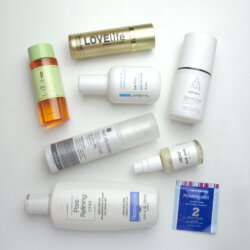How to Exfoliate 2: All About Chemical Exfoliants
Here’s Part 2 of this skincare series on exfoliation. Part 1 was on physical exfoliating tools and scrubs, this time we’re tackling the more complex chemical exfoliants, before moving onto picking the right exfoliation routine for your skin in Part 3. For a simpler overview, you can head to this exfoliation basics post, and for a more user-friendly version check …


